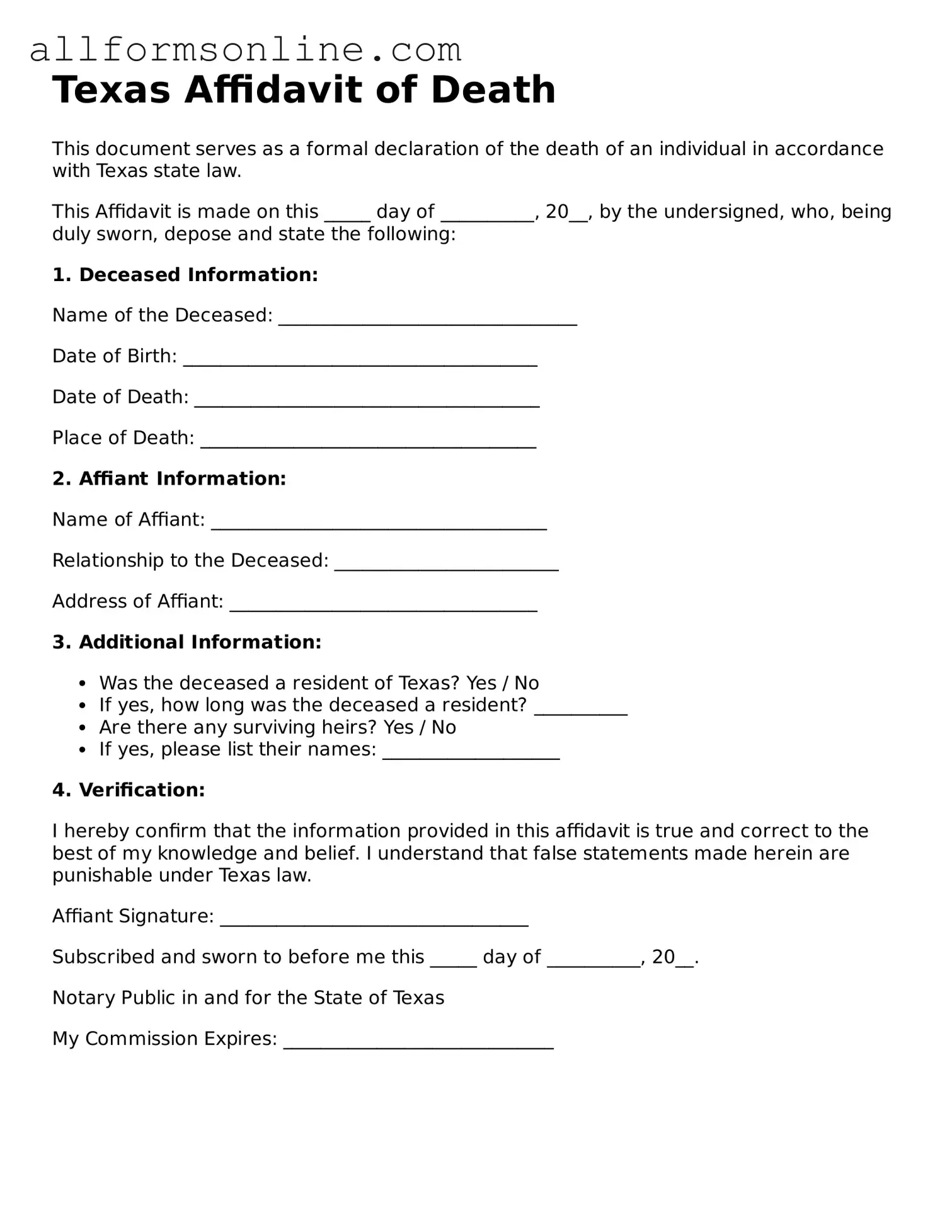What is a Texas Affidavit of Death?
A Texas Affidavit of Death is a legal document used to declare the death of an individual. This form is often utilized to settle estates, transfer property, or update records. It serves as an official statement that verifies a person's death and may be required by banks, financial institutions, or government agencies to process claims or change account ownership.
Who can file a Texas Affidavit of Death?
Generally, any person who has personal knowledge of the deceased's death can file the affidavit. This often includes family members, friends, or legal representatives. It is important that the individual filing the affidavit is able to provide accurate information regarding the deceased and the circumstances of their death.
What information is required on the affidavit?
The affidavit typically requires specific details about the deceased, including their full name, date of birth, date of death, and last known address. Additionally, the affiant (the person making the affidavit) must provide their own name, relationship to the deceased, and any relevant contact information. Supporting documentation, such as a death certificate, may also be needed.
Where do I file the Texas Affidavit of Death?
The Texas Affidavit of Death is usually filed with the county clerk's office in the county where the deceased resided at the time of death. In some cases, it may also be necessary to file the affidavit with other entities, such as banks or courts, depending on the specific circumstances surrounding the estate or property involved.
Is there a fee associated with filing the affidavit?
Yes, there may be a filing fee associated with submitting the Texas Affidavit of Death. Fees can vary by county, so it is advisable to check with the local county clerk's office for the exact amount. In addition to the filing fee, there may be costs for obtaining certified copies of the affidavit or related documents.
Can the affidavit be contested?
While the Texas Affidavit of Death is generally a straightforward declaration, it is possible for it to be contested. If there are disputes regarding the validity of the affidavit or the circumstances of the death, interested parties may challenge it in court. It is important to ensure that all information provided in the affidavit is accurate and truthful to minimize the risk of disputes.
